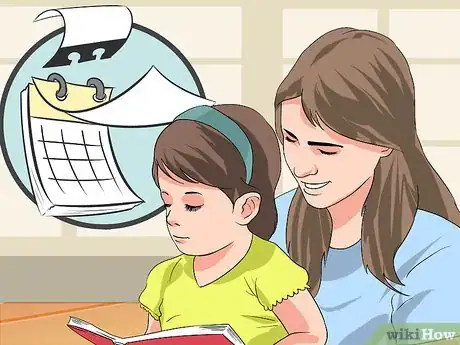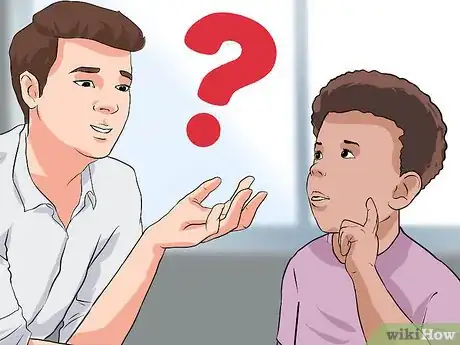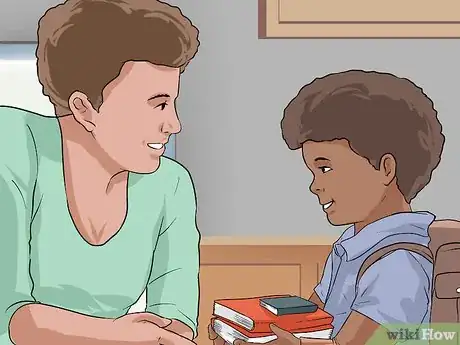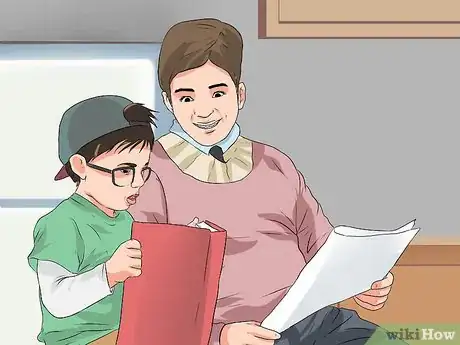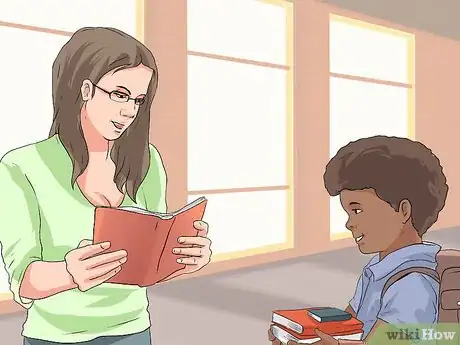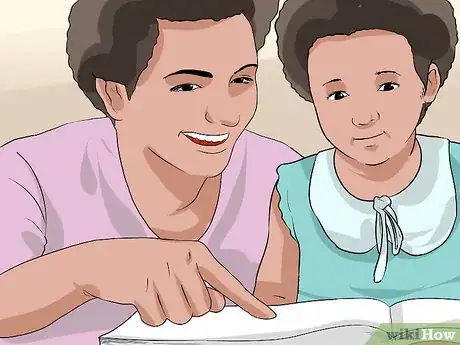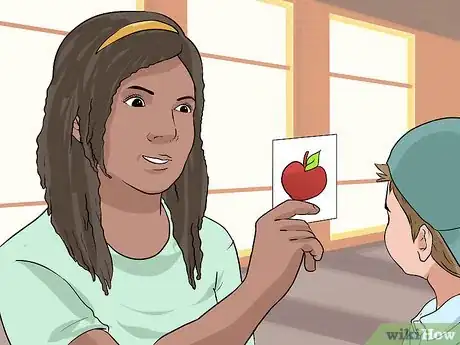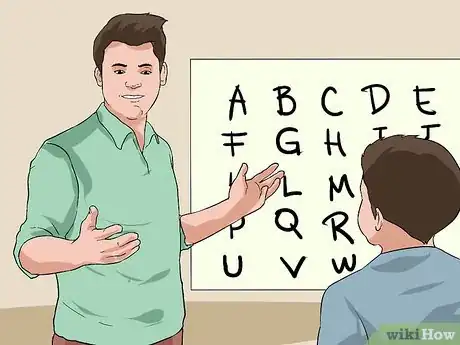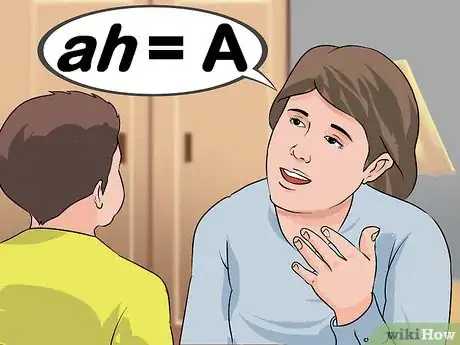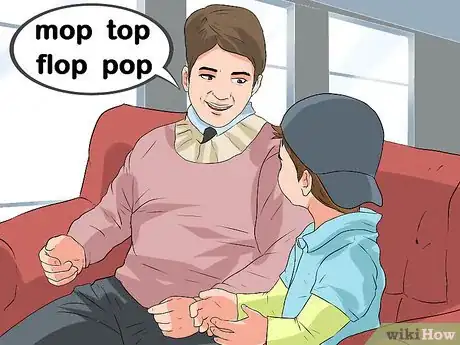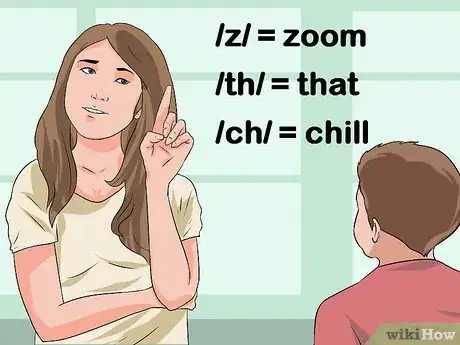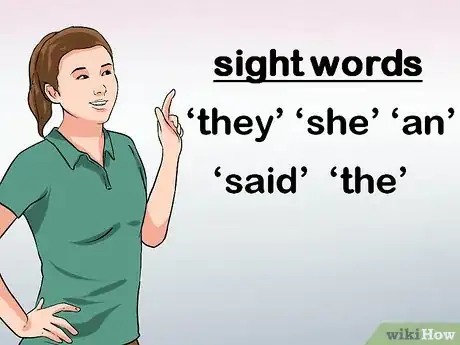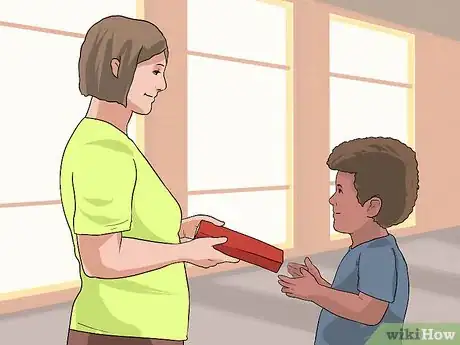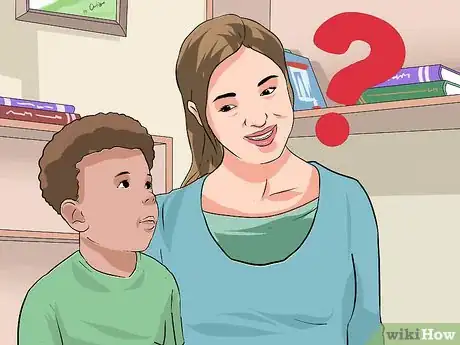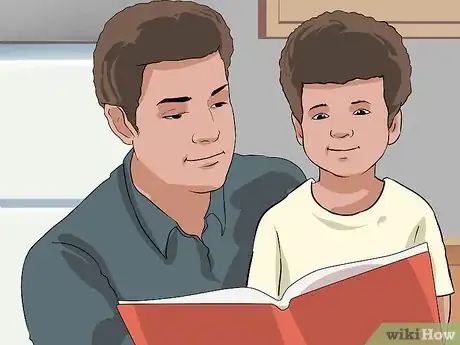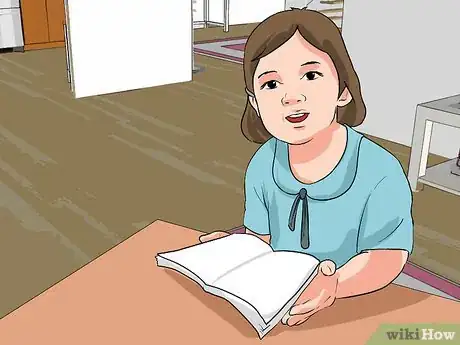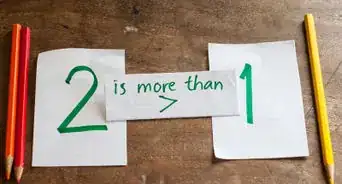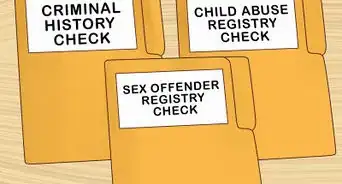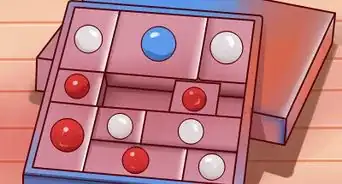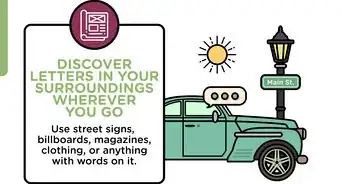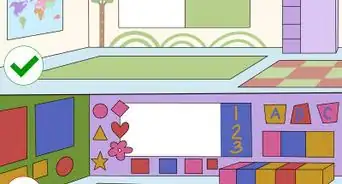This article was co-authored by Soren Rosier, PhD. Soren Rosier is a PhD candidate at Stanford's Graduate School of Education. He studies how children teach each other and how to train effective peer teachers. Before beginning his PhD, he was a middle school teacher in Oakland, California, and a researcher at SRI International. He received his undergraduate degree from Harvard University in 2010.
wikiHow marks an article as reader-approved once it receives enough positive feedback. In this case, 89% of readers who voted found the article helpful, earning it our reader-approved status.
This article has been viewed 542,834 times.
Teaching a child to read is a fulfilling and educational process, both for the parent and child. Whether you home school your kids or just want to give your child a head-start, you can begin teaching your child to read at home. With the right tools and tactics, your child will be reading in no time.
Steps
Starting Early
-
1Read to your child on a regular basis. As with all things, it's difficult to learn anything without exposure to it. In order to get your child interested in reading, you should be reading to them on a regular basis. If you’re able, this should start when they are an infant and continue through their school years. Read books with stories they comprehend; at a young age this may lead you to read 3-4 small books a day.
- Books that combine other senses besides listening help your small child to comprehend the story as you read it. For example, read many books that have pictures, tactile pages, sounds, or have accompanying scents.
- Try reading them books that might slightly challenge their comprehension level but that have an interesting or engaging story.[1]
-
2Ask interactive questions. Even before your child learns to read, they can learn reading comprehension. As you read stories to them aloud, ask them questions about the characters or the plot. For a toddler, these may be questions like “Do you see the dog? What is the dog’s name?”. The questions can escalate in difficulty as the reading level does.
- Help to teach your child critical thinking skills by asking open-ended questions about stories. You might not hear complex verbal responses until your child is four or five years old, but ask away and be patient.
Advertisement -
3Make books easily accessible. It’s no good if you have books around, but located in places that your child can’t easily take them. Keep books low to the ground and in typical play-areas so that your child begins to associate them with play activities.
- Because your child may be touching and reading the books often, be sure to choose ones that have wipeable pages and that aren’t incredibly sentimental. Pop-up books may not be the best option for young children.
- A fancy bookshelf may seem like the most attractive option, but until your child is in school focus on the utilitarian purposes of book storage.
- Set up a reading space next to the bookshelf. Set some beanbags, pillows, and comfy chairs around to sit in while reading. The top of the bookshelf can hold cups and snacks for having while reading.
-
4Set a good example. Show your child that reading is interesting and worthwhile by reading for yourself. Spend a minimum of ten minutes a day reading when your child is around, so that they see you enjoying the activity on your own. Even if you’re not an avid reader, find something to read - a magazine, the newspaper, or a cookbook all count. Soon they’ll become interested in reading on their own, simply as a result of seeing you doing it too.
- Include your child in your reading time. If you’re reading something child-friendly, tell them about what you’re reading. Accompany this by pointing to words on the page to help them connect the lines on the page with the sounds that form words.
-
5Get access to a library. This can be done in two ways: create your own mini-library at home by collecting dozens of books in your child’s reading level, or make weekly trips to the local public library together to check out books. Having a variety of books on hand (especially with an older child) will add interest for reading, and help to incorporate more vocabulary into their knowledge base.
- That being said, don't turn down a request to re-read a favorite book just because it's already been read a dozen times. [2]
-
6Start to make word-sound associations. Before you even start getting into the alphabet and sound specifics, help your child recognize that the lines on the page are directly correlated to the words you are speaking. As you read aloud to them, point to each word on the page at the same time you say it. This will help your child grasp the pattern of words/lines on the page relating to the words you speak in terms of length and sound.
-
7Avoid using flashcards. Some companies have advertised specialized flashcards to help babies, toddlers, and preschool age children to read. In general, flashcards are not the most useful or effective technique for teaching reading skills. Time spent reading stories with your child will be much more beneficial than flashcards. “Reading aloud to young children, particularly in an engaging manner, promotes emergent literacy and language development and supports the relationship between child and parent. In addition it can promote a love for reading which is even more important than improving specific literacy skills.”[3]
Teaching the Basics
-
1Teach your child the alphabet. When your child has developed word awareness, begin breaking down words into individual letters. Although the alphabet song is the most classic means of teaching the alphabet, try getting creative. Explain each of the letters with their name, but don’t worry about trying to incorporate the sounds the letters make yet.
- Teach lowercase letters first. Capital letters account for only five percent of all letters in writing English. Therefore, pay more attention to teaching the lowercase letters. lowercase letters are far more important in developing reading skills.
- Try making each of the letters out of play-DOH, playing a toss game (where the child tosses a beanbag/ball onto a specific letter on the floor), or fishing for foam letters in the bathtub. These are all interactive games that encourage development on multiple levels.[4]
-
2Develop phonemic awareness. One of the most important steps in teaching reading is associating a spoken sound with a letter or letter-pair. This process is known as phonemic awareness. There are 44 speech sounds created by the 26 letters in our alphabet, and each sound must be taught paired with its letter(s) counterpart. This includes the long and short sound produced by each individual letter, as well as the specialized sounds some combined letters make (like ‘ch’ and ‘sh’).
- Focus on a single letter/part/sound at a time. Avoid confusion and build a solid foundation by working at a steady pace through all of the speech sounds.
- Give real life examples of each speech sound; for example, state that the letter ‘A’ makes the ‘ah’ sound, like at the beginning of the word ‘apple.’ This can be turned into a guessing game, when you speak an easy word (like apple) and have the child guess the letter that it starts with.
- Use games similar to those used when teaching the alphabet, that combine critical thinking on the part of the child in order to determine sound/letter correlations. See the aforementioned list for ideas, but substitute in sounds.
- It is easier for children to develop phonemic awareness when words are broken down into their smallest parts. This can be done with the clapping game (clapping out each syllable in a word) or by sounding-out words into their individual letters.[5]
-
3Teach your child rhymes. Rhyming teaches phonemic awareness and letter recognition, in addition to the most basic English words. Read nursery rhymes to your child, and then eventually make lists of easy-to-read rhymes such as mop, top, flop, pop, and cop. Your child will begin to see the patterns of sounds that are made when certain letters are combined - in this case, the sound ‘o-p’ makes.
-
4Teach your child to read using explicit phonics. Traditionally, children are taught to recognize a word based on its size, the first and last letters, and the general sound. This method of teaching is known as implicit phonics - working from the largest piece down. However, studies have shown that readable vocabulary dramatically increases (from 900 words to 3000 words by the third grade) when taught in the opposite fashion: breaking each word into the smallest parts, and building them up into a full word - explicit phonics. Help your child to begin reading by having them sound-out each individual letter without looking at the overall word first.
- Don’t move onto explicit phonics until your child has developed adequate phonemic awareness. If they cannot associate sounds with letters or letter pairs quickly, they need a bit more practice before moving onto complete words.
-
5Have your child practice decoding. Classically known as ‘sounding out’ words, decoding is when a child reads a word by making the sounds of each individual letter, rather than trying to read the whole word at once. Reading is broken up into two primary parts: decoding/reading a word, and comprehending its meaning. Don’t expect your child to recognize and comprehend words just yet; have them focus on decoding and sounding out word parts..
- Don’t use whole stories or books yet; have your child read from word lists or from a basic story (not focusing on the plot). This is another great time to use rhymes for practice.
- Decoding aloud is typically easier for the child (and you) to learn how to say the word. Have them break it into parts with clapping if necessary.
- Do not be rigid in how the child pronounces the sounds. Regional accents and weak auditory skills make it hard for children to say most sounds in an academically correct way. Accept a reasonable effort. Recognize that learning sounds is only an intermediate step to learning to read, it is not the goal.[6]
-
6Do not worry about grammar.. Preschoolers, kindergartners, and first graders are very concrete in the way they think and cannot handle complicated concepts. By age four, most English speaking children already have an excellent grasp of grammar and in due time, they will learn all the formal grammatical rules. At this point, you need to concentrate only on the mechanical skill of reading, that is learning to decode new words and incorporating them in memory to build fluency.
-
7Build up an archive of sight words. Certain words in the English vocabulary are spoken often, but don’t follow the typical phonics rules. These words are easier to memorize by shape association than by sound, and are therefore known as ‘sight words.’ Some sight words include ‘they,’ ‘she’, ‘an,’ ‘said,’ and ‘the.’ The complete list of sight words, called the Dolch list, can be found online and broken down into sections to work through.
- Show your child sight words on a piece of paper. Le them copy it and after telling them what the word is, ask them to tell YOU what the words is.
Increasing Difficulty
-
1Begin giving your child complete stories. Odds are, your child will be in school by the time they are able to read and will be given their own reading material by their teachers. Help them to read these whole stories by encouraging explicit phonics use, and recognizing vocabulary. As their word recognition increases, they’ll be able to more fully understand story plots and meanings.
- Allow your child to look at the pictures - it doesn’t count as cheating if they do. Image and word association is a helpful aspect of building vocabulary.
-
2Have your child describe the story to you. After every reading session, have your child describe what the story was about to you. Try to get them to be detailed, but don’t expect an elaborate response. An easy and fun way to help encourage this is to use puppets who represent characters in the story, so your child can describe it to you through them.
-
3Ask questions about the stories. Similar to when you were reading stories to your child, every time your child reads ask them questions about what they’ve just read. At first it will be difficult for them to think critically about meanings of words and the buildup of character development and plot (or the semblance of those things in the most basic of stories), but over time they will develop the necessary skills to answer questions.
- Make a questions list that your child can read; their ability to read and understand the provided questions is nearly as helpful as answering the questions themselves.
- Start with direct questions, such as ‘who was the main character in the book?,’ instead of more abstract questions like ‘why was the main character upset?’
-
4Incorporate writing in with the reading. Reading is a necessary precursor to writing, but as your child develops reading skills have them practice their writing in conjunction. Children learn to read faster and easier if they learn to write at the same time. The motor memory of the letters, listening to their sounds and seeing them in writing will reinforce new learning. So, teach your child to write letters and words.
- You’ll notice an enhanced reading ability as your child learns to spell by decoding and sounding out words. Work slowly though, and don’t expect perfection.
-
5Continue reading to your child. Just as you taught your child the joy of reading before they knew how, you should continue to promote reading by reading to/with them on a daily basis. They’ll develop a stronger phonemic awareness when they can see words as you read them, rather than struggling to do both at the same time themselves.
-
6Have your child read aloud to you. You’ll be given a better idea of your child’s reading ability when they read out loud, and they’ll be forced to slow down their reading to correctly sound out words. Avoid stopping your child to correct them while reading though, as doing so can interrupt their train of thought and make comprehending what they’re reading more difficult.
- Reading out loud doesn’t have to be limited to stories; whenever you are around words, have your child sound them out to you. Road signs are a great example of something your child sees on a daily basis, and can practice reading out loud to you.
Expert Q&A
-
QuestionHow can I help my child who is struggling to read?
 Soren Rosier, PhDSoren Rosier is a PhD candidate at Stanford's Graduate School of Education. He studies how children teach each other and how to train effective peer teachers. Before beginning his PhD, he was a middle school teacher in Oakland, California, and a researcher at SRI International. He received his undergraduate degree from Harvard University in 2010.
Soren Rosier, PhDSoren Rosier is a PhD candidate at Stanford's Graduate School of Education. He studies how children teach each other and how to train effective peer teachers. Before beginning his PhD, he was a middle school teacher in Oakland, California, and a researcher at SRI International. He received his undergraduate degree from Harvard University in 2010.
Education Researcher Try to read harder books when you read with your child. Children's instructional reading level is usually higher than their independent reading level. You can read more challenging books together, then they can read easier books on their own.
Try to read harder books when you read with your child. Children's instructional reading level is usually higher than their independent reading level. You can read more challenging books together, then they can read easier books on their own. -
QuestionI am new in teaching 1-6 year old children. How do I start?
 Community AnswerRead to them. Studies show that children who are read to become much better at reading themselves.
Community AnswerRead to them. Studies show that children who are read to become much better at reading themselves. -
QuestionShould I get my child to start developing an interest in reading first, or teach them phonics first?
 Community AnswerYou should try to get your child interested in reading first so they have an incentive to learn phonics. Start by reading to your child at bedtime every night -- let them choose three to four short books that they want to read. Begin doing this as early as possible. As your child gets older, they will likely show an increased interest in phonics.
Community AnswerYou should try to get your child interested in reading first so they have an incentive to learn phonics. Start by reading to your child at bedtime every night -- let them choose three to four short books that they want to read. Begin doing this as early as possible. As your child gets older, they will likely show an increased interest in phonics.
References
- ↑ http://www.oprah.com/oprahsbookclub/The-Best-Ways-to-Teach-Kids-to-Read/4
- ↑ http://www.independent.co.uk/news/education/education-news/again-again-that-is-the-best-way-to-learn-to-read-8518000.html
- ↑ Duursma, E. v., Augustyn, M., & Zuckerman, B. (2008). Reading aloud to children: the evidence. Archives of disease in childhood 93, no. 7, 554-557.
- ↑ http://www.notimeforflashcards.com/2013/04/50-ways-to-teach-your-child-to-read.html
- ↑ http://www.takepart.com/article/2013/03/19/how-choose-school-part-3-teaching-your-kid-read
- ↑ http://www.icanteachmychild.com/2012/02/10-steps-to-teaching-your-child-to-read/
About This Article
To teach your child to read, start reading to them on a regular basis as early on as possible. As you read to them, point to the words on the page so they recognize that the lines on the page are connected to what you're saying. Then, when your child has developed word awareness, teach them the alphabet and the sounds that all of the letters make, including long and short sounds and letter combinations. Once your child can sound out the alphabet, have them practice sounding out full words and sentences. To learn how to encourage your child to enjoy reading, scroll down!
